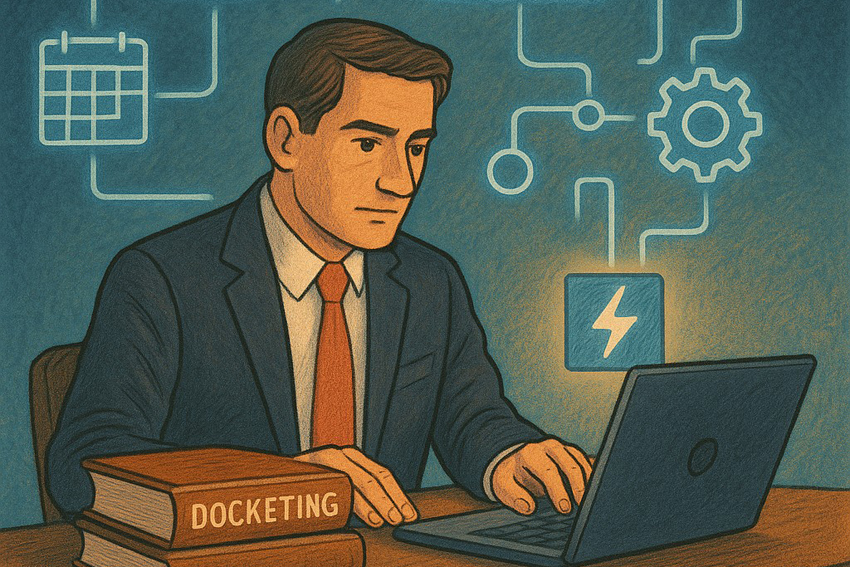Complete Communicator: Some practical ways to avoid rash assumptions and improve critical thinking
Complete Communicator: Some practical ways to avoid rash assumptions and improve critical thinking
By Jay Sullivan
In a recent piece, I shared three questions we can ask ourselves in the moment to avoid allowing our snap decision about someone’s idea from hardening into a firm conviction without more critical thinking. Let’s deepen that skill set by reframing our approach to individuals, contexts, and perspectives.
All effective changes in behavior happen on an immediate, tangible level, not on a broad philosophical plane. Saying to yourself, “I’m going to manage my team better,” doesn’t impact your actions; it’s too amorphous. Saying, “Every morning, I’m going to spend a few moments checking in with a few associates, paralegals or admin team members,” helps us commit to better behaviors. And those specific actions make each of us a better person and a better steward of our firm or organization.
Likewise, when we try to think more critically about an issue, it’s helpful to have specific questions or approaches that allow us to actually put critical thinking techniques into action. It doesn’t help to say, “I’m going to be a deeper thinker,” since I’m not even sure what that would mean. Instead, adopt approaches that combat the habits preventing us from thinking more openly and factoring in better information.
Practical ways to add flexibility to our thought processes
Here are three specific statements we can say to ourselves that will help us keep a broader mind:
- There’s an adage that “even a stopped clock is right twice a day.” (This assumes the clock is analog, not an unplugged digital model.) Likewise, even a colleague with questionable judgment whose opinion we usually discount or ignore might occasionally have a nugget of wisdom. Remain open. Who is the stopped clock in your work life? And on what topics do you discount their input? When the lead litigation partner suggests we pivot our focus to industries that are at risk in the current economic climate, she or he is speaking from years of experience and deserves our attention. When that same person suggests that we “simply” revamp our tech platform, and you know that person is not strong on the tech front, our instinct is to discount their opinion outright. We want to immediately think the partner should stick to what they know and not offer insight where they have none. That instinct is only human. But if we listen carefully, that person’s comment may prompt a line of thinking that connects to another line of reasoning so that their idea actually makes sense.
Instead of rolling your eyes, say to yourself, “It’s half-past-two … again.” This may be that partner’s one good tech idea for the year, and you don’t want to miss it. Be patient. Hear them out. You might still ultimately disregard their conclusion, but you will have remained open to their analysis, and there may be a learning moment in there for you.
Can different behavior produce different results?
- It’s human nature to develop patterns of behavior and apply them to specific settings. When we attend certain meetings or engage with particular teams at the office, we get into patterns of behavior and thinking that can limit us and our impact and rob our organization of our insights. We might be the most open, thoughtful, creative contributor in some meetings and then withdraw and shut down in other contexts. Sometimes these shifts in behavior are justified by our knowledge of a topic, the presence of certain colleagues at the table, or other factors. But sometimes, our shift in behavior is arbitrary or a matter of habit.
My wife and I have four kids. When they were still home, the six of us each had our particular seat at the table for dinner – same seat every night – like many families. It would have felt weird if, when we went to sit down for dinner, Sam plopped down in Teresa’s chair. And yet, for other meals, we all sat anywhere. Why such formality at one time and such reckless abandon at others? What’s the metaphorical seat you take at certain meetings at work? You’re open and enthusiastic at the quarterly Practice Group meeting, asking great questions and challenging assumptions – your own and others’. But at the monthly Partner Meeting you become more withdrawn and rarely speak up. For the next Partner Meeting, tell yourself, “This is lunch, not dinner. I can sit anywhere. I can contribute like I do in the Practice Group meeting.”
I’m not suggesting you bring your worst behaviors into every setting. If you’re overbearing at one meeting and quiet at another, please don’t bulldoze through every meeting. It’s about bringing out your better qualities more frequently – about listening and remaining open more consistently.
We don’t always know best
- We’re all self-centered. It’s part of human nature. It’s not bad or Machiavellian; it’s just a basic survival instinct. To contribute most meaningfully at work, and to avoid the kinds of assumptions that keep us from being more successful, we need to challenge that most basic thinking. When we offer an opinion at work, we often fall prey to two forces that keep us from making better decisions – our ego and our self-interest.
When we’re weighing options in a meeting, and one of the options on the table is our suggestion, we’re likely to want to see that option succeed because it’s ours, regardless of whether, objectively, it’s the best solution. Completely separately, one of the options might actually hold more value for us, and sometimes that value may be outside the knowledge of the group at large. In that case, we’ll often side with the option where the benefit inures to us over others. When these situations arise, we’re best served to ask ourselves a tough question. “To what extent am I part of the problem?” Is the way we’re contributing truly in the best interest of the group, or is my ego, self-interest, or stubbornness getting in the way?
Asking this question of ourselves is tough enough. If we conclude we are, in fact, part of the problem, acting to rectify the situation is even harder. Hopefully, we can get there. But if not, just asking the question of ourselves will naturally temper our reactions and encourage us to be more open.
A mental checklist
In sum, to stay more open and to think more critically, we should challenge ourselves to:
- Remain open to ideas from others, even those with whom we don’t usually agree.
- Rethink why we behave differently in certain settings and assess whether it’s time to contribute more meaningfully – even if that means talking less, not more.
- Challenge the motive behind ideas we support and decide if we need to get out of the way.

Jay Sullivan is a former practicing attorney and the former managing partner at Exec/Comm, LLC, a communications consulting firm. He is the author of “The New Nimble: Leading in the Age of Change,” “Simply Said: Communicating Better at Work & Beyond,” and “Raising Gentle Men: Lives at the Orphanage Edge.” He can be reached at [email protected].
Share this story, choose a platform
Brought to you by BridgeTower Media
Free Weekly Newsletter
Recommended content
The Small Practitioner: Re-thinking docketing technology as critical law firm infrastructure
The Small Practitioner: Re-thinking docketing technology as critical law firm infrastructure By Dominick Esposito For law firms, legal operations teams, and [...]
What a grade school game taught me about legal innovation
How a 5th grade brain can outthink artificial intelligence and provide better insights into solving grown-up professional problems. Read more [...]
The art of the attorney exit email
While there are no hard-and-fast rules, it is best not to burn bridges and to keep future lines of communications [...]
How much should an associate attorney be paid?
Law firms often seen to go to extremes and pay too much or too little. Both approaches can cause problems. [...]






